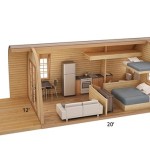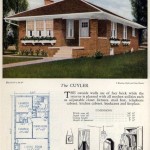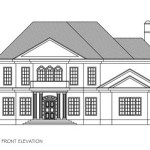Floor Plan of an Ancient Roman House
The floor plan of an ancient Roman house, known as a domus, reflects the social structure, architectural ingenuity, and cultural values of the Roman civilization. While variations existed depending on size, wealth, and location, a typical Roman house adhered to a standardized layout, showcasing a sophisticated understanding of space and functionality. Understanding the floor plan reveals insights into the daily lives, social interactions, and aesthetic preferences of the inhabitants.
The Atrium: The Heart of the Roman Home
The central element of a domus was the atrium, a rectangular courtyard open to the sky. Often featuring a pool in the center called an impluvium, the atrium served as the heart of the home, providing natural light and ventilation. The atrium was typically surrounded by rooms accessible through doorways or arches. It served multiple purposes: gathering space for the family, a place for receiving guests, and a location for conducting business. The impluvium collected rainwater, which was channeled to cisterns for later use, demonstrating the Romans' practical and efficient approach to resource management.
Rooms Around the Atrium: Public and Private Spaces
Around the atrium were arranged rooms serving various functions. The tablinum, a formal reception room, was located at the far end of the atrium and housed the family's ancestral portraits and other important objects. Adjacent to the tablinum were the cubicula, bedrooms for family members and guests. These were typically small and simply furnished. The triclinium, a dining room, was often located to the left or right of the tablinum, and featured a raised dining platform, known as a triclinium, where guests would recline on couches during meals. Further away from the atrium, the culina, the kitchen, served as the primary space for food preparation and storage, reflecting the importance of food in Roman society.
The Peristyle: A Sanctuary of Privacy and Leisure
Beyond the atrium, a domus often featured a peristyle, a garden courtyard enclosed by a colonnade. The peristyle provided a tranquil escape from the bustle of the atrium, serving as a space for relaxation, contemplation, and private gatherings. The colonnade surrounding the peristyle offered shade and protection from the elements, creating a comfortable and inviting environment. The garden within the peristyle was typically adorned with flowers, shrubs, and fountains, reflecting the Romans' appreciation for nature and beauty. The peristyle was a testament to the Romans' dedication to their personal well-being and the importance of privacy within the home.
The specific layout of a Roman domus could vary depending on the social status and wealth of the owner. Larger, more luxurious houses often incorporated additional features, such as libraries, workshops, and even swimming pools. However, the basic structure of the atrium and peristyle remained consistent, highlighting the common elements of Roman domestic architecture.
Evolution and Adaptations: The Pompeian House
The eruption of Mount Vesuvius in 79 AD preserved Pompeii, a Roman city, providing a unique glimpse into the floor plans of Roman houses. Pompeii offers a wealth of information about Roman architecture, including the evolution of domus layouts. In Pompeii, houses often featured a more open plan, with the atrium and peristyle merging into a single, spacious courtyard. This adaptation reflects the changing social and cultural practices of the later Roman period, where the focus shifted towards creating more open and welcoming spaces for social interaction.
The floor plan of a Roman house provides valuable insights into the daily lives of the people who lived in them. The arrangement of rooms, the presence of specific features, and the use of space all contribute to a deeper understanding of Roman society, culture, and architecture.

Roman Domestic Architecture Domus Article Khan Academy

Plan Of A Pompeian House Roman Courtyard Plans Villa

Elegant Roman House With Atrium And

Roman House

Pin By Rebecca Koch On Ancient Rome Roman Bath House Floor Plans

House Of The Vine Museums Victoria

Roman House Layout Villa Ancient Houses

Roman Houses And Villas

Roman Art And Architecture 4 Domestic

A Atrium Of Roman House E Central Hall With Roof Opening At The Scientific Diagram








